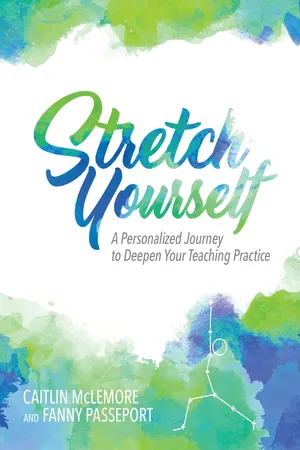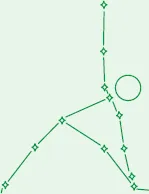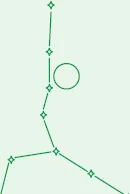
Stretch Yourself
A Personalized Journey to Deepen Your Teaching Practice
- English
- ePUB (mobile friendly)
- Available on iOS & Android
Stretch Yourself
A Personalized Journey to Deepen Your Teaching Practice
About This Book
Two award-winning young educators from opposite sides of the globe share their insights to guide teachers on how to take risks and innovate in their daily practice. Stretch Yourself: A Personalized Journey to Deepen Your Teaching Practice is chock-full of tools and strategies to show teachers, especially those new to the profession, how to stretch and innovate in their teaching. Using the metaphor of yoga--with its focus on process and practice--the authors take teachers on a journey of self-reflection and assessment, leading them through three stages: Breathe, Stretch and Meditate.The book covers such topics as developing a sense of self-awareness to achieve excellence and the importance of maintaining balance and persevering in your practice.This book features:
- The unique look and feel of a journal, with space to write and reflect on ideas as you read.
- A self-assessment quiz so you can evaluate your mindset in terms of technology use and innovation.
- Ideas for using tools available in your "edtech toolbox" to improve your teaching practice.
- Highlights of teachers' and students' voices through project examples so you can learn from various perspectives.
- Practical activities aligned to ISTE Standards for Educators and the ISTE Standards for Students.
As the authors state, "Only through interacting with content, making mistakes and trying new things can we truly become aware of what there is to learn." Audience: K-12 educators
Frequently asked questions
Information

Part 1
Breathe
ISTE Standards for Educators that Connect to Part 1
1. LEARNER

| 1a Set professional learning goals to explore and apply pedagogical approaches made possible by technology and reflect on their effectiveness. | 1b Pursue professional interests by creating and actively participating in local and global learning networks. | 1c Stay current with research that supports improved student learning outcomes, including findings from the learning sciences. |
2. LEADER

| 2a Shape, advance, and accelerate a shared vision for empowered learning with technology by engaging with education stakeholders. | 2b Advocate for equitable access to educational technology, digital content, and learning opportunities to meet the diverse needs of all students. | 2c Model for colleagues the identification, exploration, evaluation, curation, and adoption of new digital resources and tools for learning. |
Chapter 1
Envision What Might Be
Stretching Exercise
Table of contents
- Cover
- Title Page
- Dedication
- Copyright
- About ISTE
- From the Authors
- Acknowledgments
- Contents
- Introduction
- PART 1: Breathe
- PART 2: Stretch
- PART 3: Meditate
- Conclusion
- Appendix A: Quiz Scoring and Personality-Profile Inclination(s)
- Appendix B: Glocal Project Examples
- Appendix C: Digital-Citizen Lesson Plans
- References
- Index